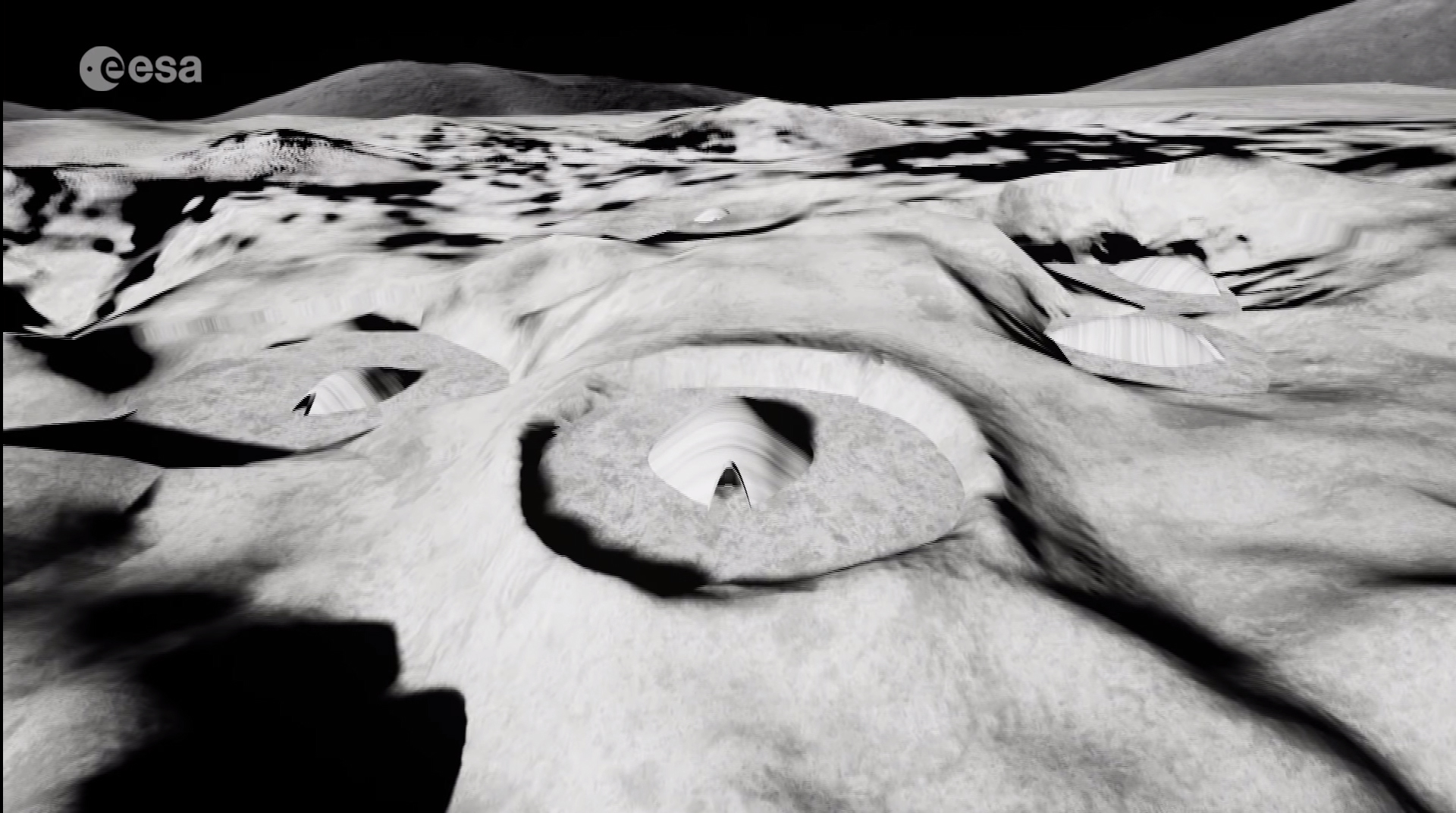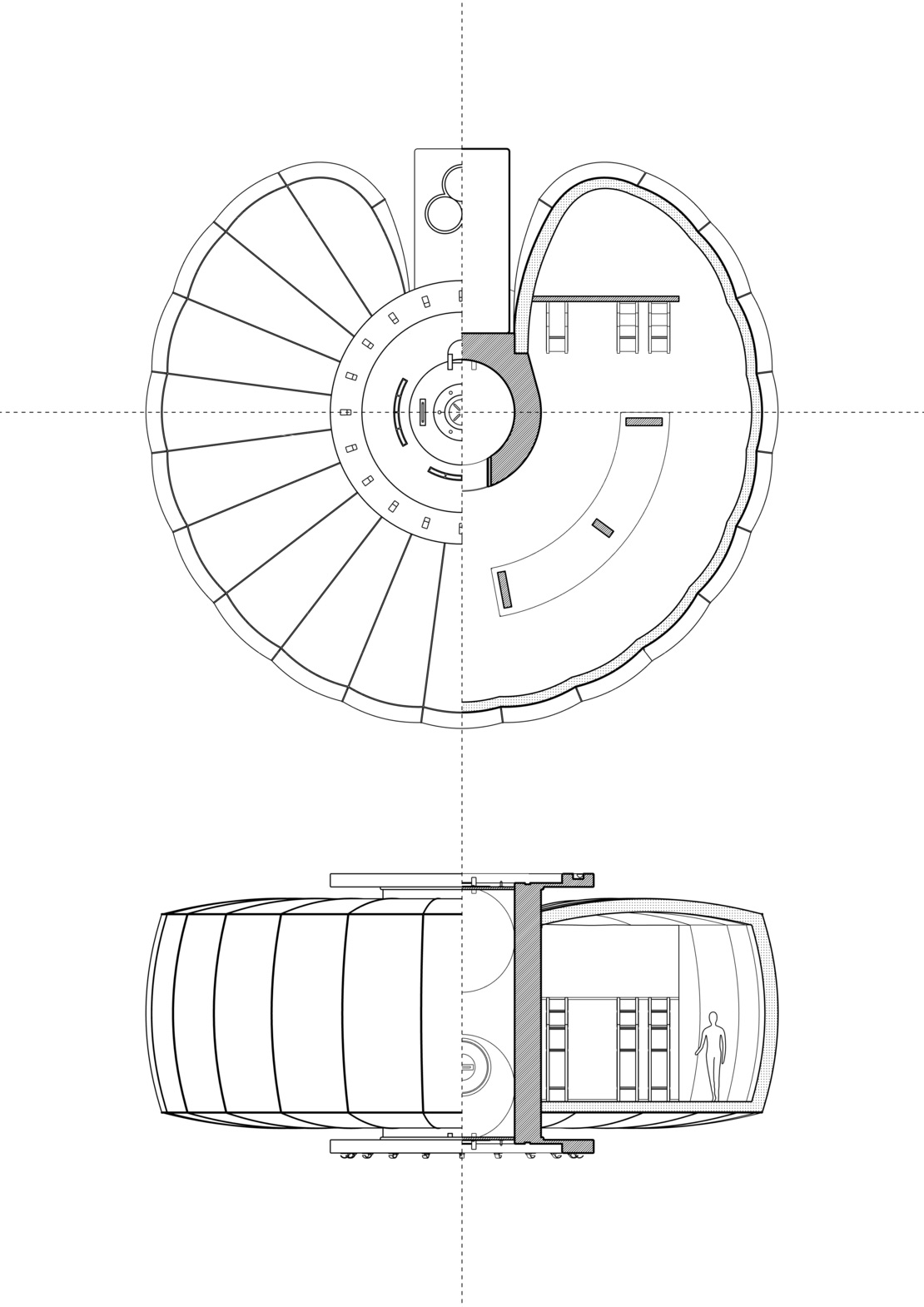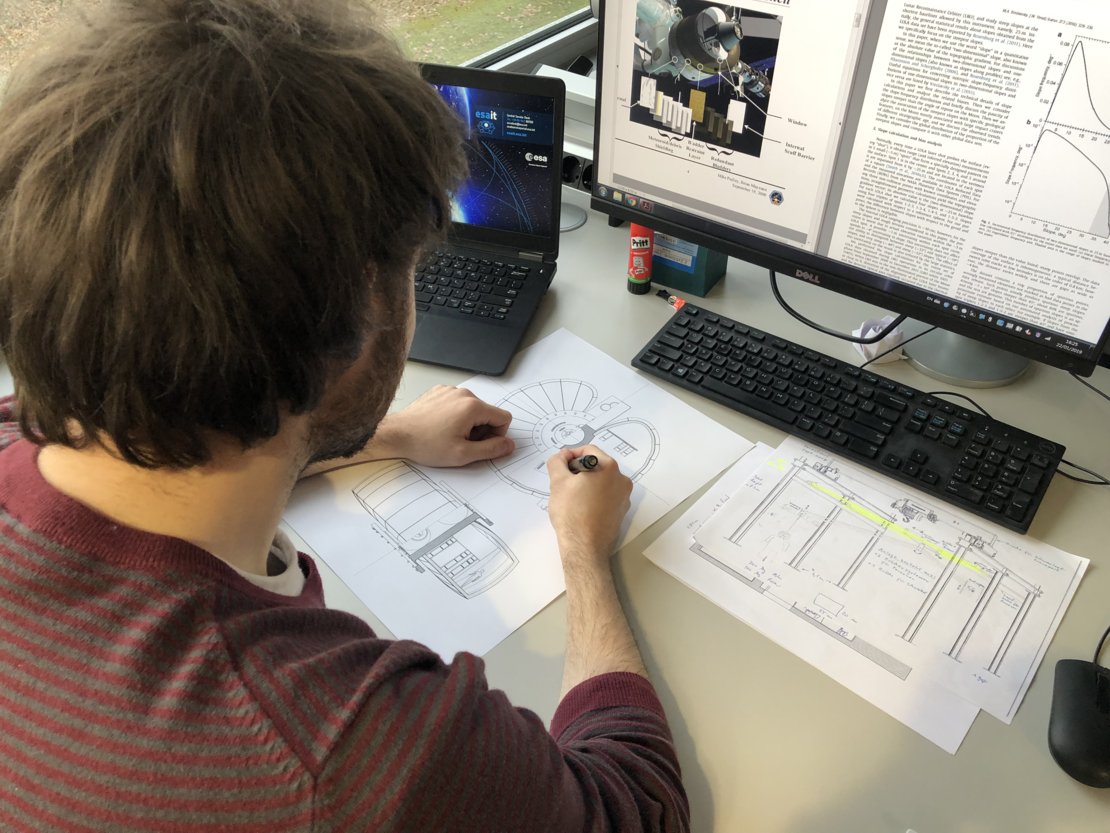This Wild Moon Base Idea Came from Architecture Students (Video)
Architectural students working with the European Space Agency (ESA) have created a new concept for a sustainable lunar habitat.
The ESA's astronaut center in Cologne, Germany, partners with universities and research institutions to study moon-related concepts in preparation for future missions. Angelus Chrysovalantis Alfatzis is one of the researchers who has contributed to the development of a promising concept for a moon base, according to a statement from ESA.
"I always strive to find material and structural solutions in accordance with the resources available on site," Alfatzis, who is in his final year of the architectural engineering program at the National Technical University of Athens, Greece, said in the statement. "At the moment, my focus is on using unprocessed lunar soil for construction and the architectural applications of this [technique]." [Moon Base Visions: How to Build a Lunar Colony (Photos)]

Alfatzis' moon base concept is designed to support human life and protect inhabitants from the extreme conditions of the lunar environment, including radiation exposure and changes in temperature, terrain and gravity.
The concept involves sending inflatable modules to the base of a small crater on the south polar region of the moon. A life-support system will be attached to each module.

Under the proposal, one module would be placed on the bottom of the crater, then partially buried by lunar soil, shielding inhabitants from radiation and extreme temperatures, as well as possible micrometeoroids. Subsequent modules would be stacked on top of the previous module and sealed, then buried by lunar soil.
"The multidisciplinary nature of our team — from aerospace engineers to biologists — helped us examine all the different details of construction and energy requirements," Alfatzis said.
Get the Space.com Newsletter
Breaking space news, the latest updates on rocket launches, skywatching events and more!

This lunar concept was submitted for the Moon Village Association competition in 2018, winning the runner-up prize.
"The whole experience drove us to think more deeply on the different aspects of lunar construction and habitation, showing us many different possibilities for our future on the moon," Alfatzis said.
Follow Samantha Mathewson @Sam_Ashley13. Follow us @Spacedotcom, Facebook and Google+. Original article on Space.com.
Join our Space Forums to keep talking space on the latest missions, night sky and more! And if you have a news tip, correction or comment, let us know at: community@space.com.

Samantha Mathewson joined Space.com as an intern in the summer of 2016. She received a B.A. in Journalism and Environmental Science at the University of New Haven, in Connecticut. Previously, her work has been published in Nature World News. When not writing or reading about science, Samantha enjoys traveling to new places and taking photos! You can follow her on Twitter @Sam_Ashley13.









